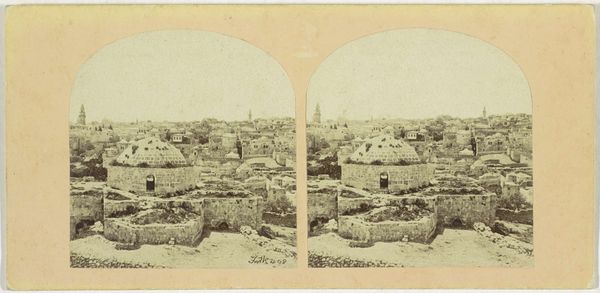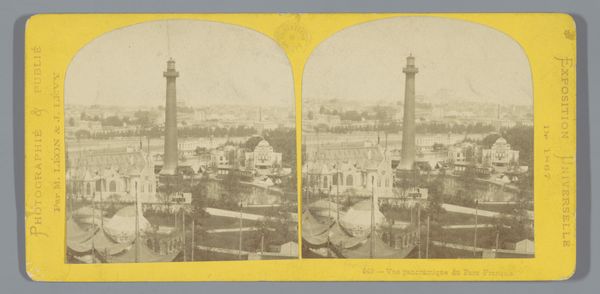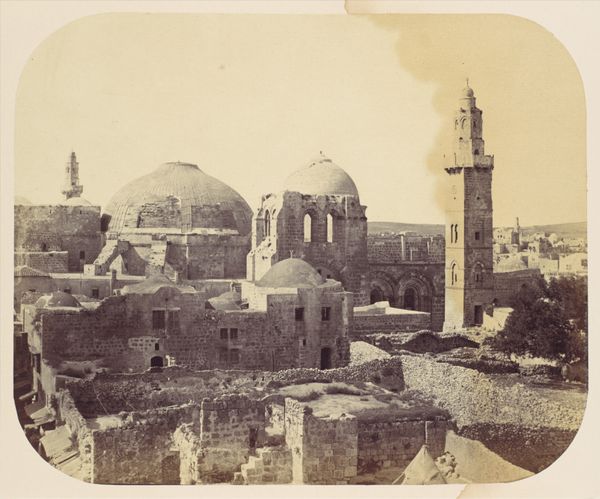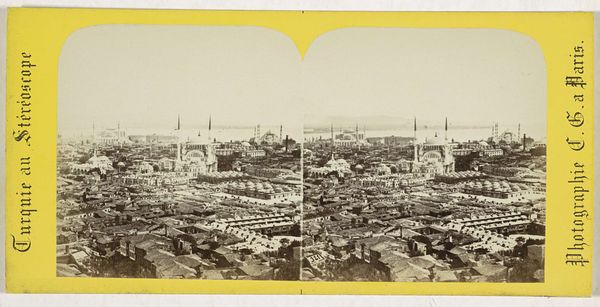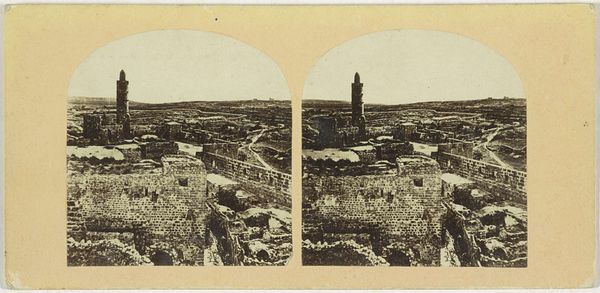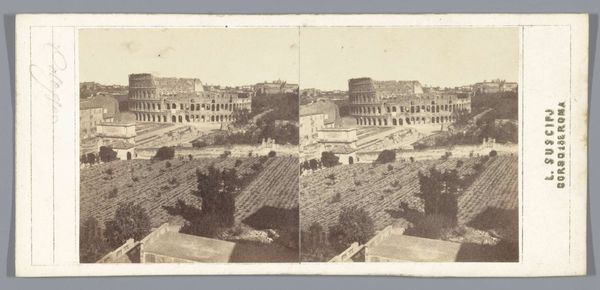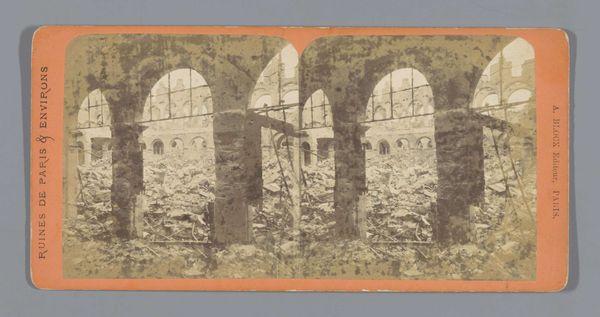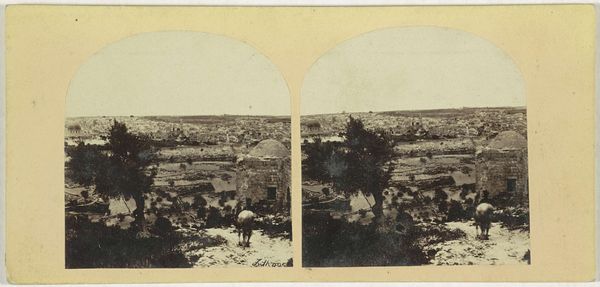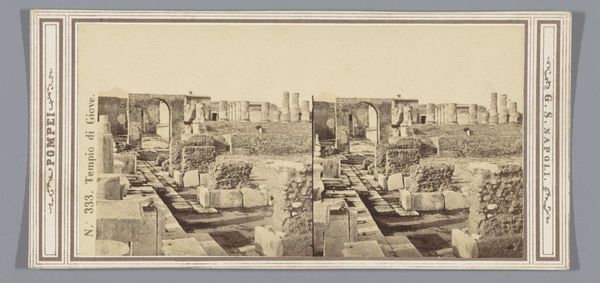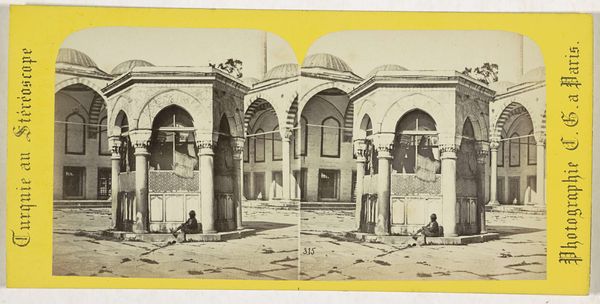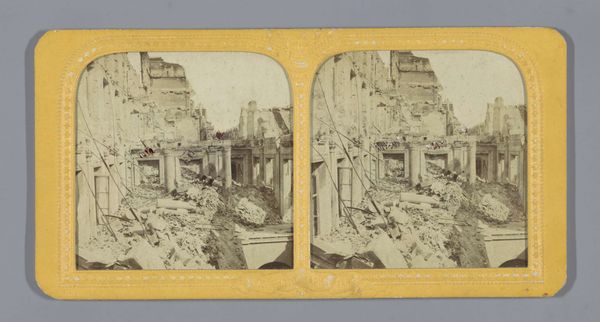
photography, gelatin-silver-print
#
16_19th-century
#
landscape
#
photography
#
orientalism
#
gelatin-silver-print
#
cityscape
Dimensions: height 84 mm, width 174 mm
Copyright: Rijks Museum: Open Domain
Curator: This gelatin-silver print, captured between 1859 and 1861 by Francis Frith, is entitled "Gezicht op de Heilig Grafkerk in Jeruzalem," or "View of the Church of the Holy Sepulchre in Jerusalem". Editor: It's…stark. That pale tonality across the architectural forms lends a monumental feel. It appears like the entire cityscape is bathed in a rather uniform, albeit faded, light. Curator: Frith’s photography offers insights into the rising popularity of orientalism in the 19th century, revealing how Western audiences imagined and engaged with the "East" through a specifically photographic lens. Consider also the political implications, particularly the colonial gaze inherent in representing such significant religious sites. Editor: Indeed. Structurally, I'm captivated by the geometric play – the dome of the church against the linear fortifications. Frith positions the viewer at an elevated vantage, presenting the scene in layers of geometric masses and constructed linear structures, with the Church rising dominant among them. Curator: And his choice of Jerusalem carries profound weight, doesn't it? He photographs it during a period of intense imperial expansion and theological reevaluation. Frith’s photographs would have offered a kind of armchair pilgrimage for European and American audiences. The new technology made these distant holy places real in a way they hadn’t been before. Editor: True, but he's also very deliberate in how he uses this technology. Note the composition itself: the photograph’s inherent limitations with the limited tonal range are converted to high contrast edges around solid geometrical building blocks and walls which contribute to an overwhelming structural legibility to the eye, as well as communicate stability. This communicates in this instance, permanence. Curator: Precisely. He's not merely documenting a cityscape but rather constructing a narrative, reinforcing and shaping perceptions of the Holy Land. He walks a tightrope, blending observation with subjective interpretation and the pressures to provide easily consumed images for far away consumers of media. Editor: So, it seems he delivers an architectural scene but embeds potent narratives of place, technology and, above all, structural and cultural authority. Very clever! Curator: Absolutely. This piece encapsulates the convergence of artistic, technological, and socio-political forces prevalent during its time. Editor: Well, looking at this now, I recognize his keen understanding of visual language which invites the eye into an historic conversation much greater than its aesthetic appeal.
Comments
No comments
Be the first to comment and join the conversation on the ultimate creative platform.
